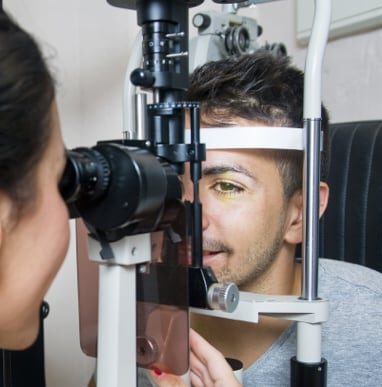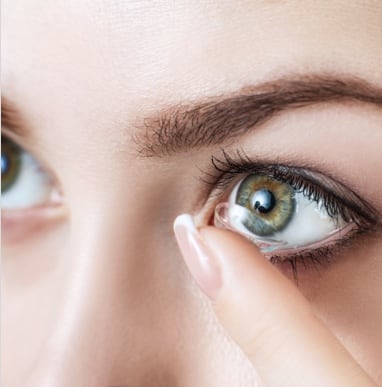If you experience headaches, you know how disruptive they are to daily life. While you often associate headaches with stress, tension, or sinus issues, they can result from other reasons.
You can experience dry eyes and headaches. While dry eyes do not cause headaches, there is evidence linking them. For relief from your symptoms, visit your eye doctor for an eye exam, dry eye assessment, and treatment recommendations.
What Is Dry Eye Disease?
Dry eye disease is a condition where the eyes do not produce enough tears or the tears produced are of poor quality. High-quality tears contain water, oil, and mucus and are vital for keeping your eyes comfortable, moist, and healthy.
However, poor-quality tears lack one or more components and can affect your eyes. Several factors can contribute to insufficient tears or an unstable tear film, including:
- Environmental factors, such as dry air or wind
- Certain medical conditions, like autoimmune diseases or hormonal changes
- Certain medications can reduce tear production
- Lifestyle choices, such as excessive screen time
- Prolonged contact lens use
The symptoms of dry eyes can range from mild irritation to severe discomfort, such as:
- A gritty or scratchy feeling in the eyes
- Stinging or burning sensation in the eyes
- Eye redness
- Light sensitivity
- Blurry vision
Dry Eye & Headache Connection
No evidence suggests dry eyes cause headaches. However, people with headaches have a 20% greater risk of having dry eye disease.
The exact mechanisms aren’t fully understood, but it’s thought that inflammation may be a common factor. While migraines, which are headaches of varying degrees, lead to head pain, they can also result in eye and vision symptoms like light sensitivity.
Eye Strain & Headaches
Long periods in front of screens, which count as near-focused work, can cause increased eye strain. You also tend to blink less when in front of a computer, which makes your eye muscles work harder to compensate for the lack of moisture.
Dry eyes and headaches can result from common triggers. Eye strain can cause dry eyes and trigger headaches from neck pain and exposure to light. Activities requiring prolonged concentration, such as reading, computer use, or watching TV, can also worsen headaches.
Sjogren’s Disease & Headaches
Sjorgen’s disease is an autoimmune condition where your body sees its own tissues as foreign. Sjorgen’s disease presents with dry eyes and headaches. Dry eyes and mouth are common symptoms of Sjogren’s disease and 50–75% of people with the condition experience headaches. These headaches may include tension-type headaches, migraines (with and without aura), and cluster headaches.
Dry Eyes & Cluster Headaches
Cluster headaches are headaches on one side of the head accompanied by pain or a stabbing sensation in or behind the eye. Eye pain from cluster headaches can be mistaken for dry eyes.
You can get a headache before, at the same time as, or after experiencing dry eyes for a while. Regardless of when you notice both symptoms, visit your eye doctor to determine the underlying cause and the link between dry eyes and your headaches.
Management & Treatment for Dry Eyes
The management and treatment of dry eyes can depend on the underlying cause and the severity of the condition.
Artificial Tears
Over-the-counter artificial tears are a simple and effective way to relieve dry eye symptoms. These eye drops help lubricate the eyes, thus providing temporary relief from dryness and discomfort. Consider using preservative-free artificial tears for best results, as they are less likely to irritate the eyes.
Lifestyle Changes
Using a humidifier in your home or workplace can increase indoor humidity levels, help maintain moisture in your eyes, prevent excessive evaporation of tears, and reduce allergens in the air.
Follow the 20-20-20 Rule
To minimize eye strain, practice the 20-20-20 rule when working on a screen: every 20 minutes, take a 20-second break and focus on something at least 20 feet away. This simple exercise can help relax your eye muscles and prevent dryness.
Punctal Plugs
Plugging the tear ducts can prevent tears from draining, keeping them in the eyes for longer.
In-office Treatments
In-office treatments for dry eyes can include the following:
- IPL Therapy: A light-based treatment used below the eye area to manage dry eye symptoms.
- Heat Therapy: Warms blocked oil glands in the eyes to help release the oil component in tears.
- Eyelid Debridement: Blephex helps to remove any bacteria buildup that may be contributing to dry eye symptoms.
Dry Eye Therapy for Symptom Relief
While the mechanisms are unclear, seemingly unrelated issues like dry eyes and headaches can be connected and occur together. If your eyes are dry, book an appointment with Vision Care Cente for a dry eye evaluation and recommend treatment options such as dry eye therapy.
If you experience dry eyes and headaches, or these symptoms persist or worsen over time, mention this to your eye doctor, as it can indicate another vision or medical issue.












